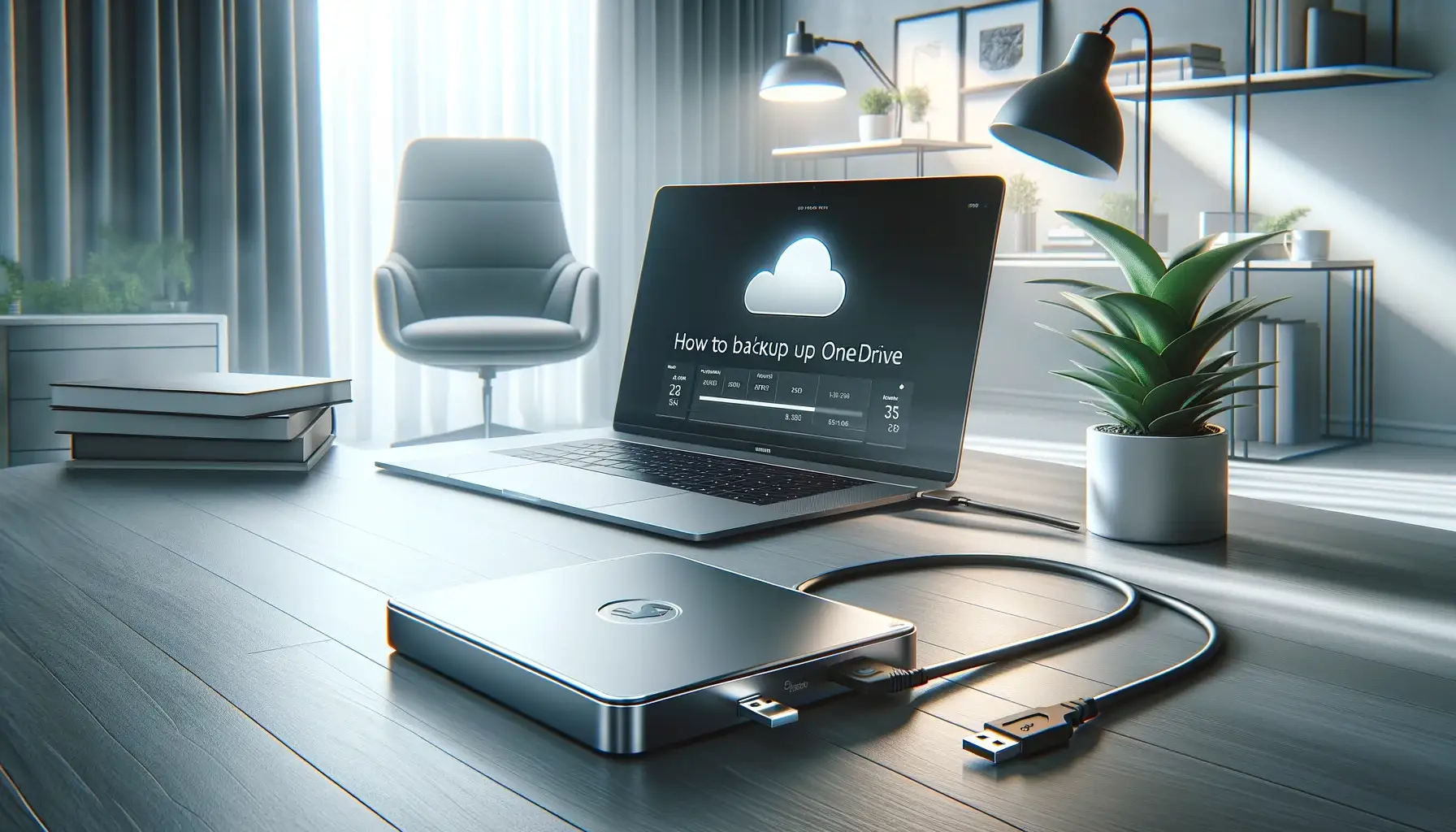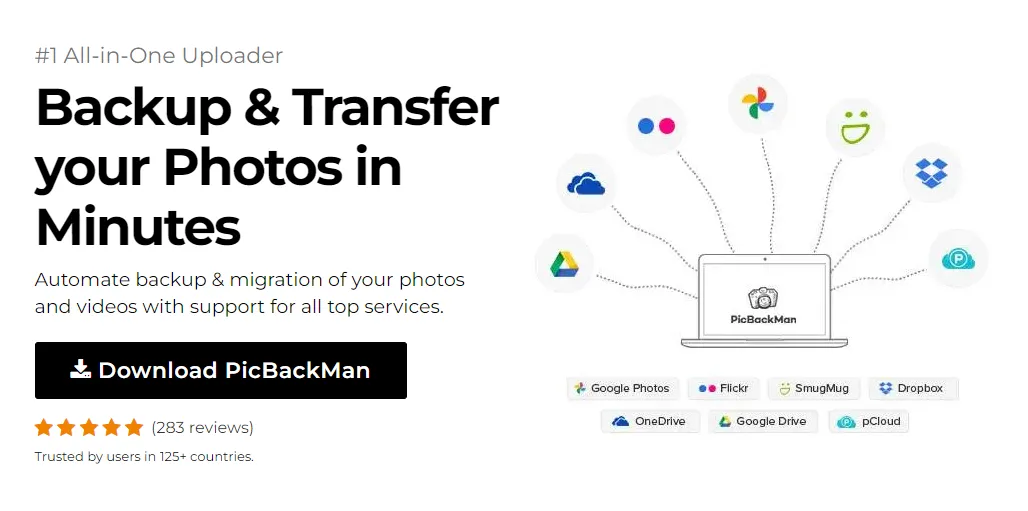
Why is it the #1 bulk uploader?
- Insanely fast!
- Maintains folder structure.
- 100% automated upload.
- Supports RAW files.
- Privacy default.
How can you get started?
Download PicBackMan and start free, then upgrade to annual or lifetime plan as per your needs. Join 100,000+ users who trust PicBackMan for keeping their precious memories safe in multiple online accounts.
“Your pictures are scattered. PicBackMan helps you bring order to your digital memories.”
How to Backup OneDrive to External Hard Drive


Are you tired of worrying about losing your precious files stored on OneDrive? Whether it's important work documents, cherished family photos, or your favorite music collection, safeguarding your digital assets is crucial. OneDrive offers a convenient cloud storage solution, but having an additional backup on an external hard drive adds an extra layer of protection against data loss. In this comprehensive guide, we will walk you through the process of backing up your OneDrive to an external hard drive, ensuring that your data remains safe and accessible whenever you need it.
OneDrive, Microsoft's cloud storage service, is a fantastic tool for keeping your files accessible from anywhere with an internet connection. However, relying solely on the cloud can leave your data vulnerable to various risks, including accidental deletion, data corruption, or service outages. To truly secure your files, it's wise to create a backup on an external hard drive. This not only provides redundancy but also gives you the peace of mind that your data is under your control.
How to Backup OneDrive to External Hard Drive
Backing up your OneDrive to an external hard drive may seem like a complex task, but it's actually quite straightforward. Follow these steps to ensure that your data is safe and easily recoverable:
-
Connect Your External Hard Drive: Start by connecting your external hard drive to your computer. Ensure it has sufficient storage space to accommodate your OneDrive files.
-
Access OneDrive on Your Computer: If you haven't already, download and install the OneDrive desktop application on your computer. Sign in using your Microsoft account credentials.
-
Configure OneDrive Settings: Right-click on the OneDrive icon in your system tray (usually located at the bottom right corner of your screen) and select "Settings." In the "Account" tab, click "Choose folders" to select which folders you want to sync with your computer. Make sure all the files you want to back up are included.
-
Sync OneDrive to Your Computer: After selecting the folders, click "OK" and then click "Sync Now." OneDrive will start downloading your selected files to your computer.
-
Copy Files to the External Hard Drive: Once the syncing is complete, open the File Explorer on your computer. Locate the OneDrive folder, which should now be synced to your local storage.
-
Select All Files: Press "Ctrl + A" to select all files within the OneDrive folder. You can also manually select specific files and folders if you prefer a more selective backup.
-
Copy Files: Right-click on the selected files, choose "Copy," and then navigate to your external hard drive using the File Explorer.
-
Paste Files: Right-click on the external hard drive and select "Paste" to copy all your OneDrive files to the external storage.
-
Monitor the Transfer: The time it takes to complete the transfer depends on the size of your files and the speed of your external hard drive. Ensure the process is uninterrupted.
-
Eject and Safely Disconnect: Once the transfer is finished, safely eject the external hard drive from your computer following the proper procedures to avoid data corruption.
Congratulations! You have successfully backed up your OneDrive to an external hard drive, providing an additional layer of protection to your valuable data.
Why Backup OneDrive to an External Hard Drive?
Now that you know how to perform the backup, let's delve into the reasons why it's essential to do so:
-
Data Redundancy: Storing your data in multiple locations reduces the risk of losing it. Even if one storage solution fails, your data remains safe on the other.
-
Offline Access: An external hard drive allows you to access your files even without an internet connection. This can be invaluable when you're in remote locations or experiencing internet outages.
-
Protection Against Data Loss: Accidents happen, and files can be deleted or corrupted. Having a local backup ensures that you can recover your data swiftly.
-
Control and Privacy: When you backup OneDrive to an external hard drive, you retain control over your data's security and privacy. You're not relying on a third-party service to protect your information.
Tips for a Smooth Backup Process
To ensure a seamless and efficient OneDrive backup to an external hard drive, consider the following tips:
-
Regularly Update Your Backup: Make it a habit to update your backup regularly, especially when you add or modify files in your OneDrive folders.
-
Use High-Quality External Hard Drives: Invest in reliable external hard drives from reputable brands to ensure the longevity and durability of your backup solution.
-
Organize Your Files: Maintain an organized file structure in your OneDrive to make it easier to select specific files for backup. This also helps in retrieving files when needed.
-
Encrypt Your Backup: To enhance security, consider encrypting your external hard drive. This ensures that even if it falls into the wrong hands, your data remains protected.
Troubleshooting Common Issues
While the process of backing up OneDrive to an external hard drive is relatively straightforward, you may encounter some common issues. Here's how to address them:
1. Not Enough Space on External Hard Drive
If your external hard drive doesn't have enough space to accommodate all your OneDrive files, you have a few options:
-
Upgrade Your External Hard Drive: Consider purchasing a larger external hard drive to accommodate your growing storage needs.
-
Prioritize Files: Selectively backup only the most crucial files and folders to your external hard drive.
2. Slow Transfer Speed
If the transfer speed is slower than expected, try the following:
-
Use USB 3.0 or Higher: Ensure that you're using a USB 3.0 or higher port for faster data transfer.
-
Check for Background Processes: Close unnecessary programs running in the background to free up system resources.
3. File Conflicts
In some cases, you may encounter file conflicts if you have files with the same name in both OneDrive and the external hard drive. Here's how to handle it:
- Rename or Move Files: Resolve conflicts by renaming files or moving them to a different location on your external hard drive.
Quick Tip to ensure your videos never go missing
Videos are precious memories and all of us never want to ever lose them to hard disk crashes or missing drives. PicBackMan is the easiest and simplest way to keep your videos safely backed up in one or more online accounts. Simply Download PicBackMan (it's free!), register your account, connect to your online store and tell PicBackMan where your videos are - PicBackMan does the rest, automatically. It bulk uploads all videos and keeps looking for new ones and uploads those too. You don't have to ever touch it.
FAQs
Q: Can I use an external hard drive to back up my OneDrive on a Mac?
A: Yes, the process is similar on Mac. Connect your external hard drive, configure OneDrive settings, and then copy and paste the files to the external drive.
Q: Can I schedule automatic backups of my OneDrive to an external hard drive?
A: OneDrive doesn't offer built-in scheduling for backups. You can use third-party backup software to automate the process.
Q: Is it safe to store sensitive data on an external hard drive?
A: External hard drives can be safe for sensitive data if you take security precautions, such as encrypting the drive and keeping it in a secure location.
Q: What should I do if my external hard drive becomes corrupted?
A: If your external hard drive becomes corrupted, you may need to use data recovery software or consult a professional for assistance in recovering your data.
Q: Can I use a flash drive instead of an external hard drive for OneDrive backup?
A: You can use a flash drive, but keep in mind that they usually have limited storage capacity compared to external hard drives, so you may need multiple flash drives for larger backups.
Q: Does OneDrive offer version history for backed-up files?
A: Yes, OneDrive does offer version history for files, allowing you to restore previous versions of documents in case of accidental changes or deletions.
Conclusion
Backing up your OneDrive to an external hard drive is a smart move to protect your valuable data from potential loss or damage. With the step-by-step guide provided, you can easily create a secure and reliable backup solution. Remember to regularly update your backup, maintain an organized file structure, and invest in high-quality external hard drives for peace of mind.
Now that you know how to backup OneDrive to an external hard drive, take control of your data's destiny and ensure it remains accessible whenever you need it.






